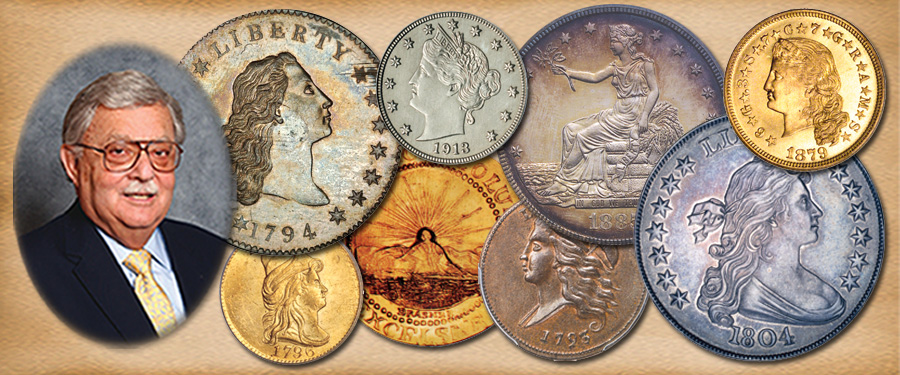
Rarities – Can supply factors make them scarce or more common?
The question often arises whether a rare or scarce coin that was difficult to find sometimes become more common. The answer is " Yes." Many things affect the supply of a given coin, including how many were made, the amount of commercial use received, bullion value versus face value, popularity of a design or denomination, international and domestic affairs, and much more. Since 1793 the U.S. Mint has struck large numbers of coins, and these factors have all played their parts in determining what coins are scarce and rare. But just because a coin is scarce or rare at a given time, does not mean it will always be that way.
Let me tell you what happened to silver dollars (primarily the Morgan design) when more were struck than were needed or wanted in circulation. At the time that Morgan dollars were being made from 1878 to 1921, they were the largest silver coins in the United States. There was some call for them in circulation, especially in our western states where people loved “hard money” and liked the silver dollar as a medium of exchange.
However, the U.S. mints in Philadelphia, New Orleans, San Francisco, and Carson City struck hundreds of millions of Morgan dollars. Many of these were stored at banks or at the Mint to back paper currency issued by the United States, held as a valuable exchange coin for currency.
Just after World War I, in 1918, the Mint realized that paper money was being accepted nationwide and Congress passed the Pittman Act, legislation that resulted in 272,232,722 silver dollars being melted, and the ingots stored at the Mint and Treasury Department, used to pay national debts and also to strike new silver coins. So some dates and mintmarks were destroyed and were not available for circulation, collecting or as a store of value.
One would think that this would have made the silver dollar rare as so many were melted in a short period and there was the usual attrition of commercial use. But there were not millions of collectors of silver dollars in that period. A complete set was limited by the Philadelphia Mint 1895, available only in Proof and to the extent of only about 800 examples. There were other dates/mintmarks that required a large premium, but many collectors decided to acquire one of each year, regardless of the mintmark. This seemed to satisfy many who could not find or afford scarcer and rarer coins that had higher premiums.
However, not all silver dollars were melted or released. Many were retained in the Treasury, at the Mint or in banks. For years, the silver dollars sat in the vaults. Since gold coins had been recalled by an Act of Congress in 1933 and were no longer in circulation, the silver dollar remained the largest coin one could retain. Over the years, some of the coins were released from storage and eventually millions of silver dollars that had never been placed into circulation were found to the delight of collectors. This find changed the availability of certain dates of Morgan dollars and eventually there was a complete review of what was stored in the vaults. The bags were opened, the coins were sorted by date and the available population for the collectors changed. The interest in silver dollars grew immediately and even the non-collecting public sought to acquire an example as a "relic of American history.” The Treasury packed the coins in special Lucite holders and sold them at a premium. It was a great stimulus to the collecting of United States silver dollars, and also increased interest in numismatics as a whole,
It was and still is a fascinating story.





